Yokosuka MXY-7 Ohka — The Kamikaze Baka Bomb
October 10th, 2023
9 minute read
The current war in Ukraine has reintroduced us to the “kamikaze” moniker. in 2023, it normally refers to a kamikaze drone. The modern equivalent of the World War II Japanese concept of the self-sacrificing Divine Wind attackers no longer involves the death of the pilot — only the drone expends itself on the target, controlled by a distant operator using a system guided by video.
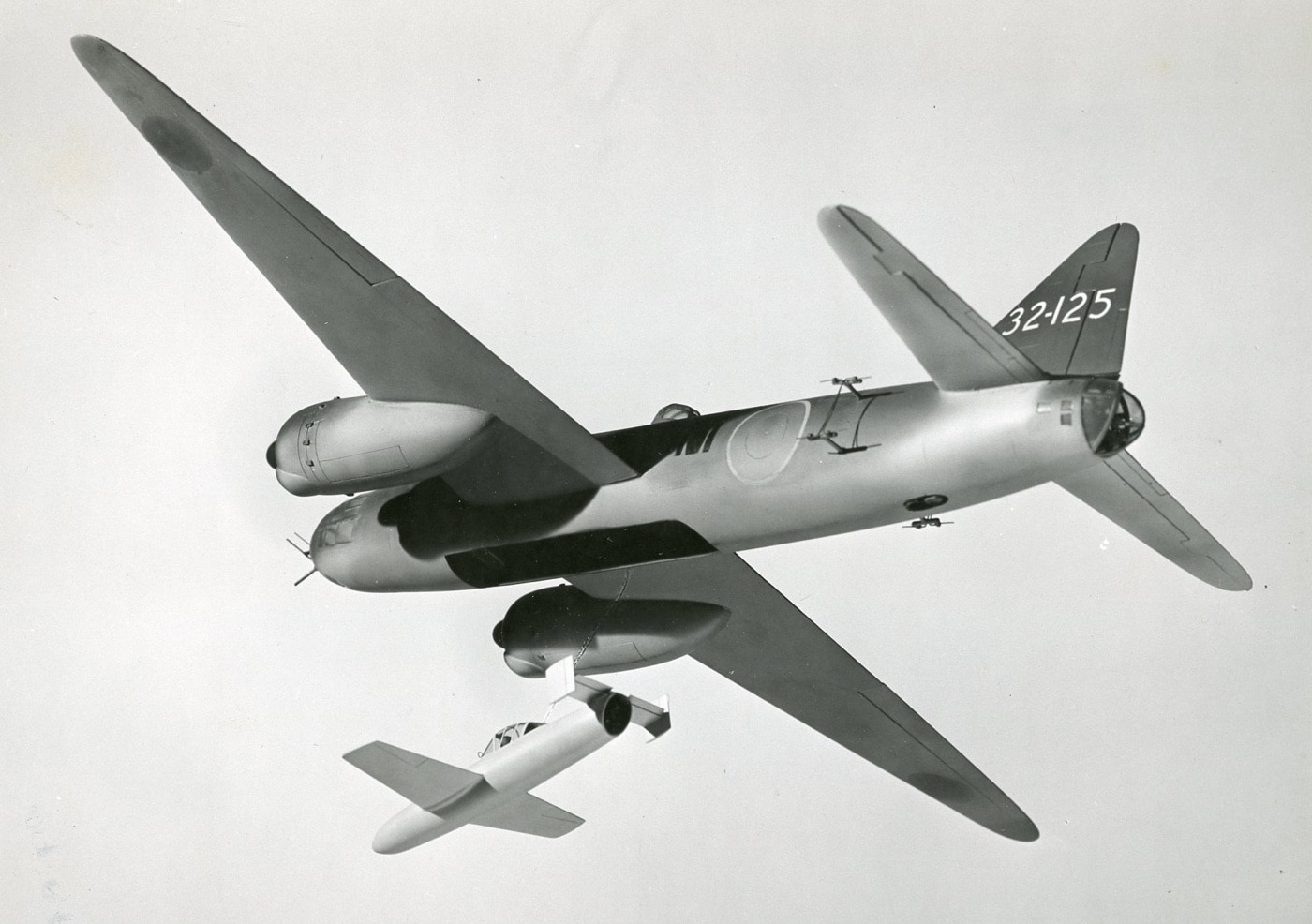
In late 1944, however, the Japanese lacked the advanced technology we now take for granted. Instead, they coupled rocket technology with the fanaticism of men willing to give their lives for their Emperor to create Yokosuka MXY-7 “Ohka”. The MXY-7 rocket was a cherry blossom (“Ohka”) by Japanese definition and a fool (“Baka”) in the estimation of the Americans who faced it.
Baka Bomb — Human Guidance System
The Yokosuka MXY-7 was a cantilever, low-wing monoplane that was first conceived in 1943, more than a year before the notion of the Kamikaze suicide aircraft became a concerted effort for the Japanese Navy and Army air forces.
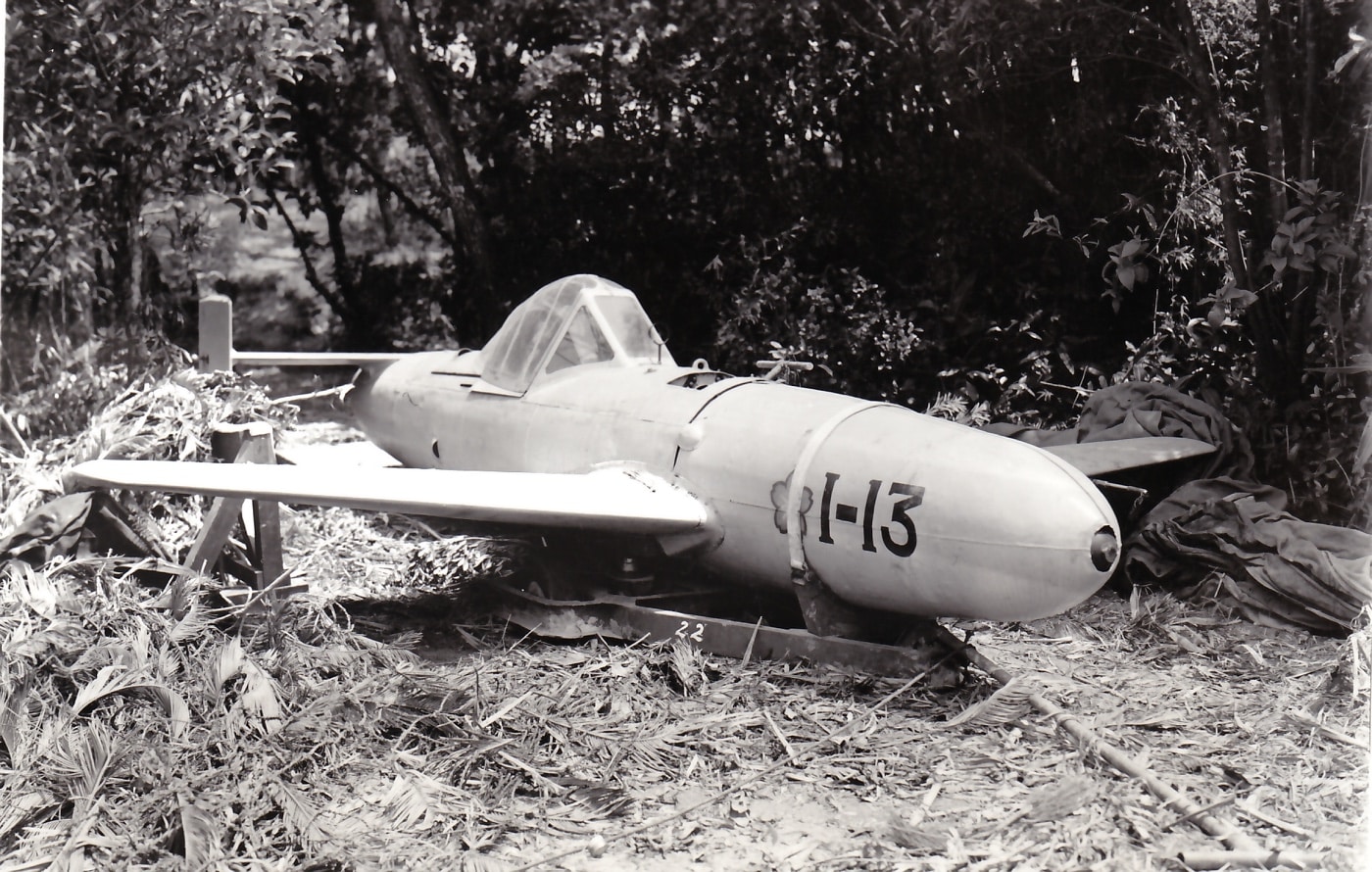
Ensign Mitsuo Ohta, working with students at the Aeronautical Research Institute in Tokyo, created the initial design for the rocket-propelled ship-killer. After nearly a year of disinterest, the Japanese Navy proceeded with the project. The first 155 of the new Ohka flying bombs were completed at Yokosuka, with the remainder of the 852 total constructed at the Kasumigaura Naval Air Arsenal.
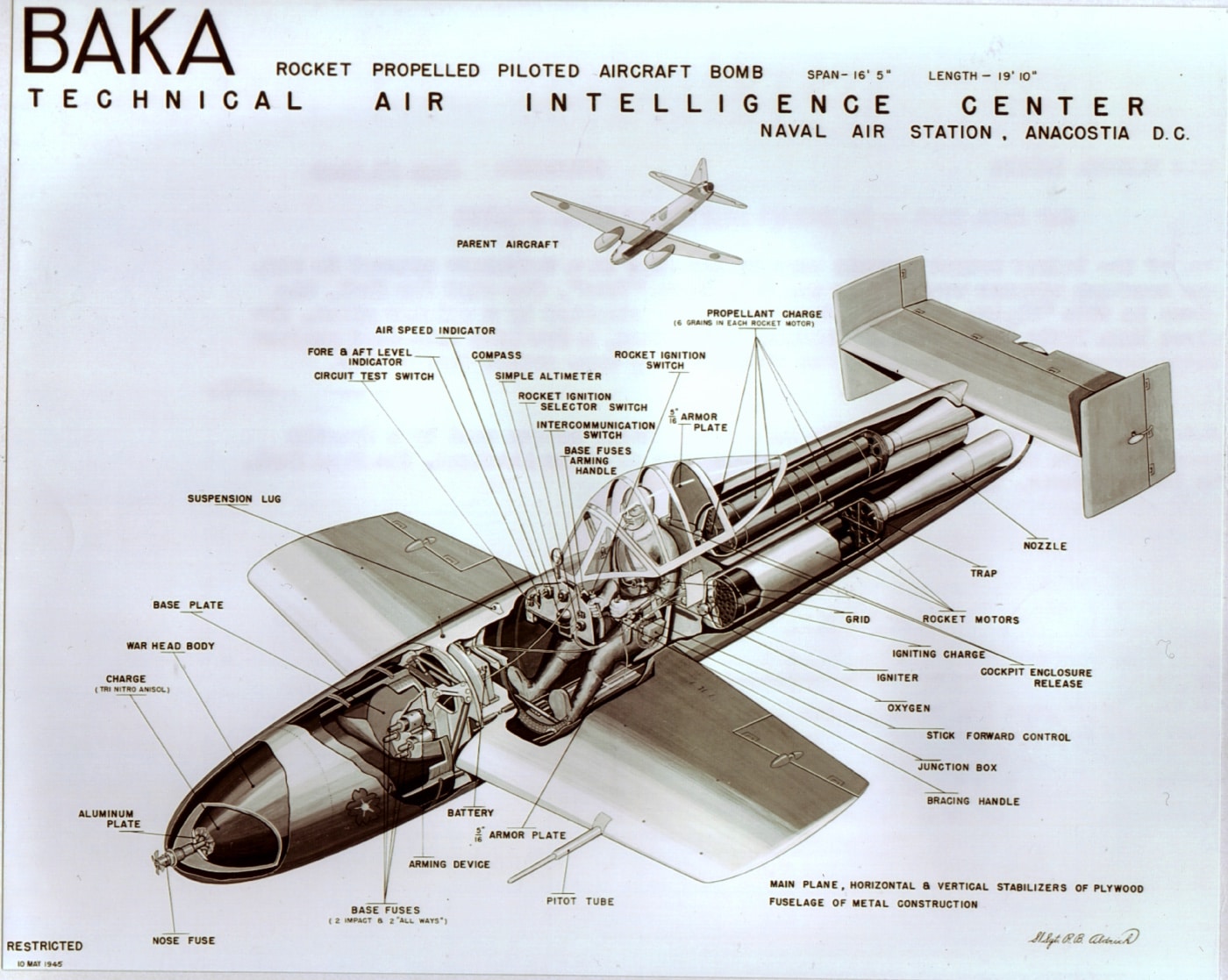
The concept was a simple (but fast) delivery system for a massive 2,600-pound warhead. The small aircraft was basically a winged bomb powered by three Type 4 Model 1/Mark 20 solid-fuel rocket motors. The rockets could be used individually or all together, powering the Ohka to speeds of 400 mph in level flight and more than 600 mph in a power dive. The pilot was provided with rudimentary controls — good enough, at least, for his short final flight.
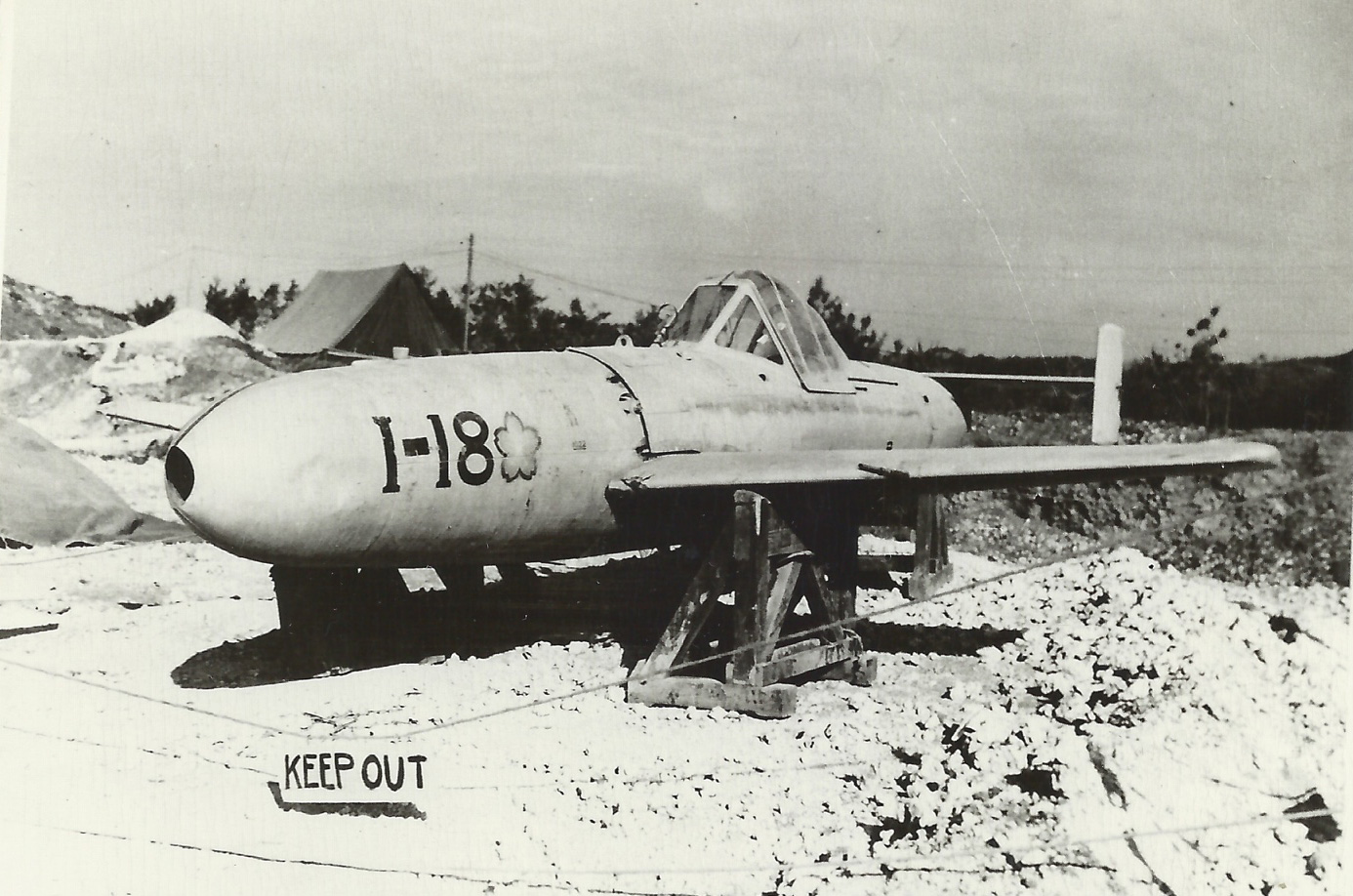
The human kamikaze pilot offered a simple solution to the biggest problem bedeviling the missiles of the era: a reliable guidance system. Weapons like the German Hs293 and “Fritz X” glide bombs were steered by remote control from a bombardier in a launching aircraft from some distance away. After early German successes, the Allies learned to jam their command signals.
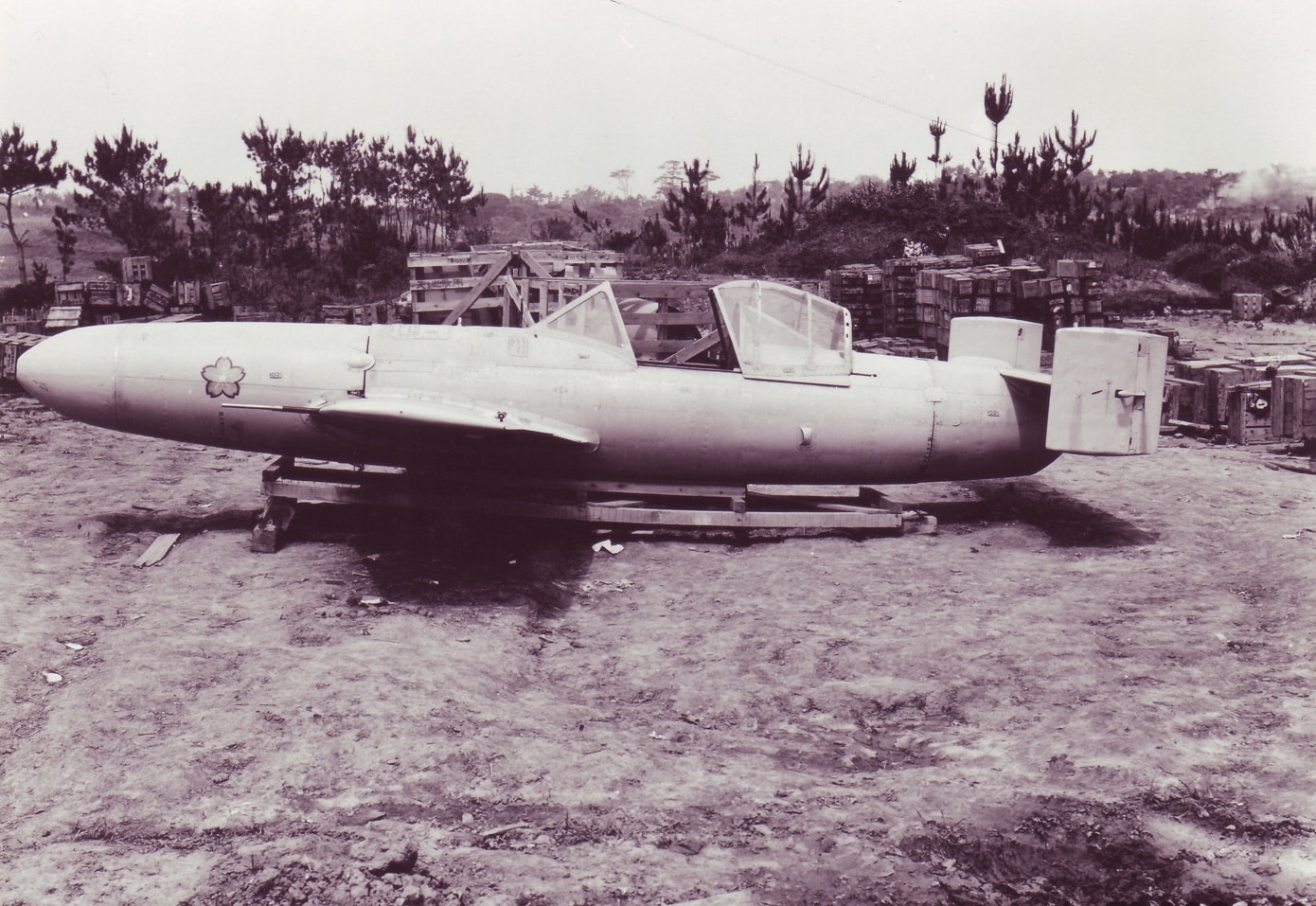
Allied glide bombs had proved to be horribly inaccurate — and the American radar-guided ASM-N-2 “Bat” would not become available until April 1945. In the meantime, Imperial Japan had the best available guidance system for the MXY7 Ohka: a Japanese suicide pilot willing to sacrifice his life to strike the target.
Hitching a Ride with Betty
Despite the Ohka’s impressive speed and devastating payload, the manned flying bomb had a very short range — about 23 miles. Consequently, a conventional aircraft was required to carry the Ohka to the target area and then release the suicide bomb within its performance envelope. If the Japanese had air superiority over the target area, the Ohka’s mothership would be in little danger. However, by the time the Ohka was operational, Japan had no such luxury.
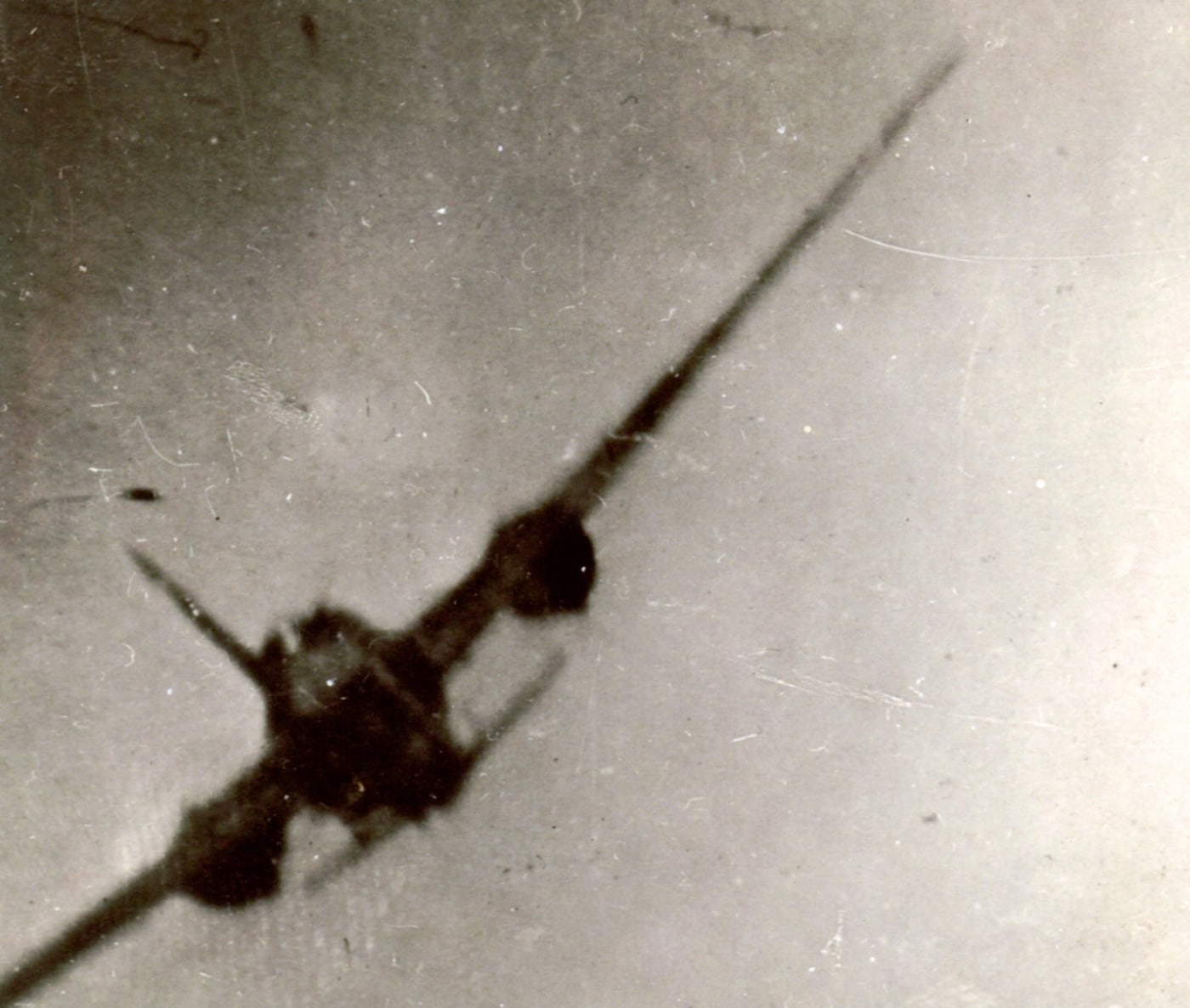
There were many aircraft proposed to carry the Ohka into combat. Still, in the end, it was an old hand that ended up as the mother ship: the Mitsubishi G4M “Betty” twin-engine bomber (specifically the G4M2e Model 24 “Tei”). The 4,700+-pound Ohka was usually carried partially recessed in the Betty bomb bay, with the pilot normally traveling inside the bomber until he entered his suicide craft as it closed on the target area. If the targets were close to the Ohka’s base, the pilot would normally be bolted into his cockpit before the bomb was attached to the mothership. The Ohka was equipped with a small oxygen supply for high-altitude operations, allowing the piloted bomb to be released at above 26,000 feet.
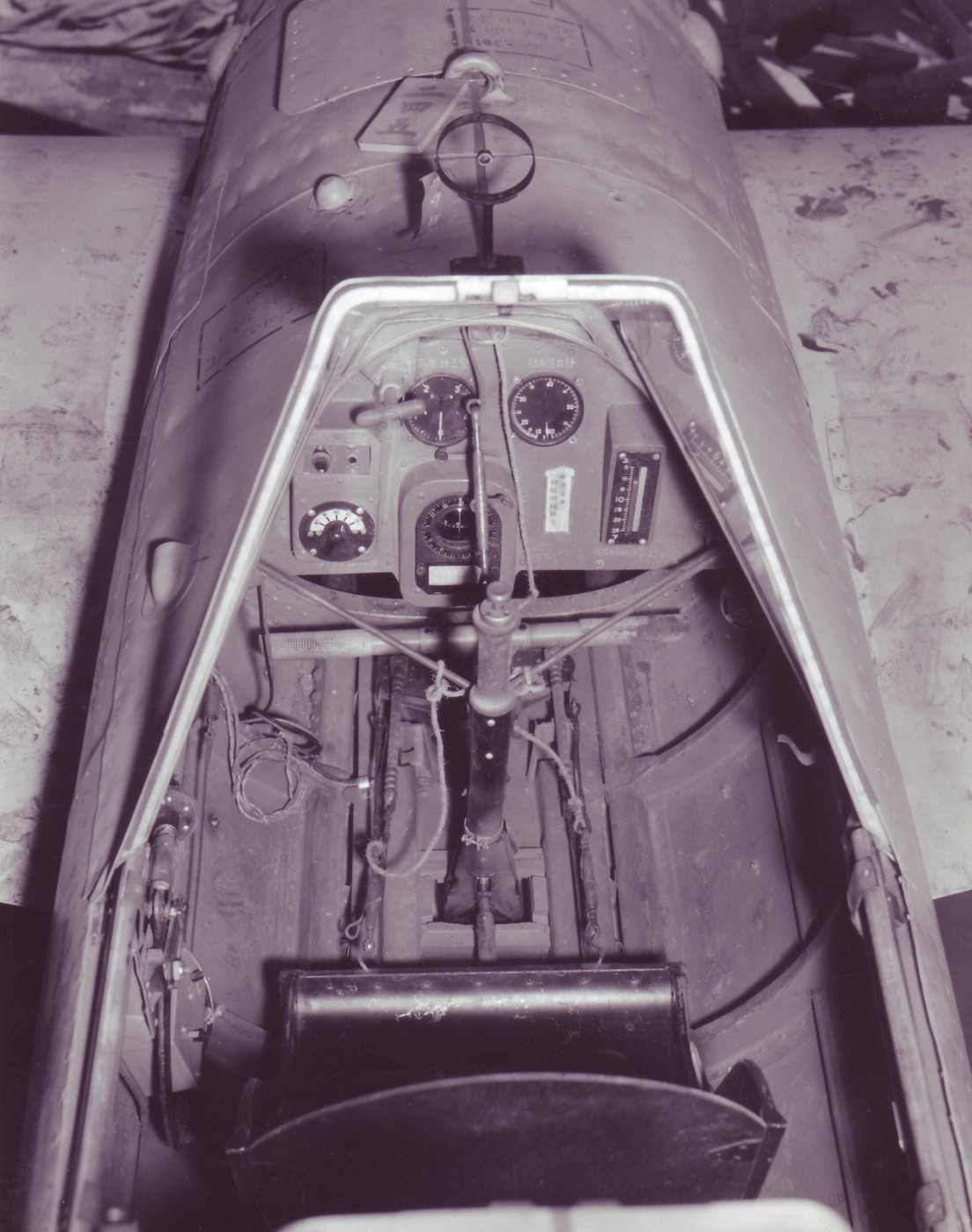
The Betty bombers were particularly vulnerable to U.S. Navy combat air patrol (CAP) fighters — the Grumman F6F Hellcat and the Vought F4U. It was unlikely that the Betty groups would arrive with an escort, and once detected by USN radar, the motherships were easy meat for the fighters. On several missions, none of the Ohka-carrying Betty bombers returned to base.
Difficult Beginnings for the Yokosuka Ohka
In late 1944, with the U.S. invasion of the Philippines underway, the Japanese sought to deliver their new rocket bombs to counter American naval power. On November 28, 1944, the Japanese super-carrier Shinano began her shakedown cruise to deliver 50 Ohkas to the Philippines. Instead, Shinano was struck by four torpedoes from the USS Archerfish (SS-311,) sending the carrier to the bottom along with more than 1,400 of her crew and all the Ohkas. On December 19, 1944, 30 more Ohkas were lost enroute to Manila aboard the carrier Unryu, which was torpedoed and sunk by the USS Redfish. Through no fault of its own, the Ohka had yet to fly a combat mission.
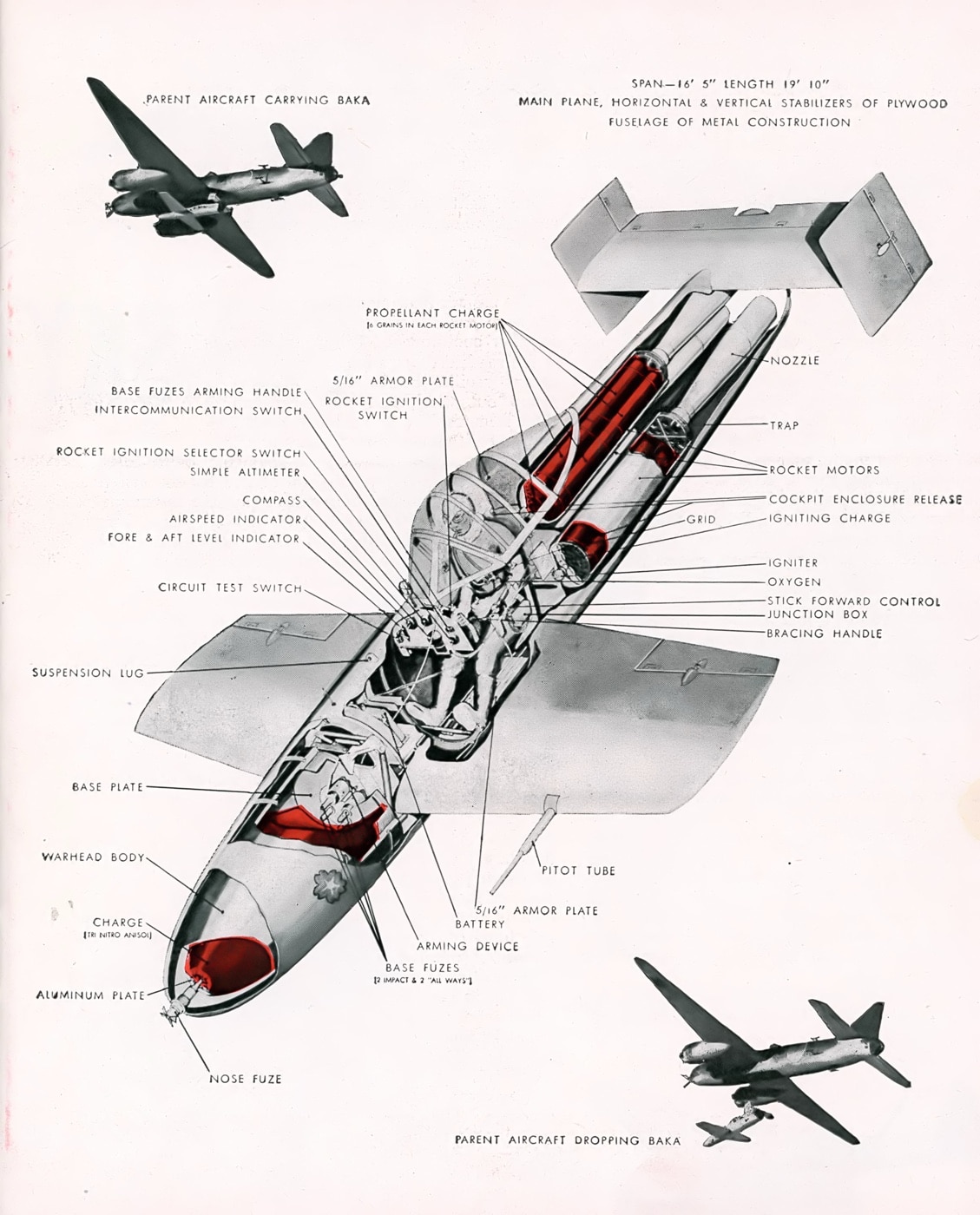
The Ohka finally struck on April 1, 1945, as six G4M Betty bombers carried the rocket bombs into action against the U.S. fleet off Okinawa. None of the carrier aircraft survived, but one Ohka had a near miss on the battleship USS West Virginia (BB-48,) causing a considerable amount of damage.
On April 12th, nine Bettys brought their Ohkas to challenge the U.S. fleet. Eight of the G4Ms were shot down, but not before one Ohka struck the destroyer USS Mannert L. Abele (DD-733) and blew it in half. A total of 84 of her crew were killed. Nearby, AA fire from the destroyer USS Jeffers (DD-621) exploded an Ohka less than 50 yards from the ship — the resulting blast causing severe damage, causing the Jeffers to withdraw from action.
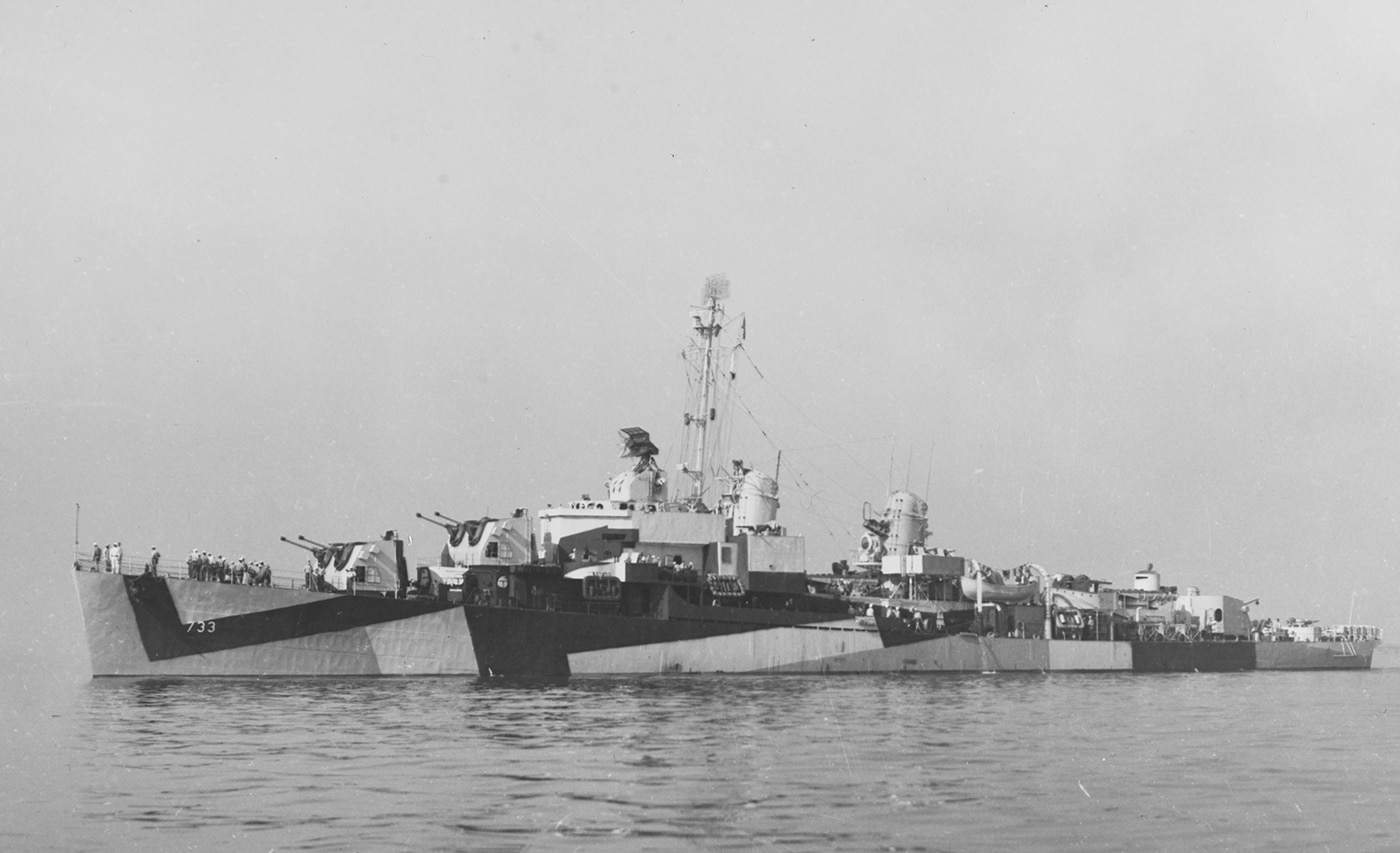
Meanwhile, the destroyer USS Stanly (DD-478) was hit by an Ohka whose warhead passed through the thinly armored ship and then exploded underwater nearby. A second Ohka attacked Stanly and missed by a few feet as the rocket-propelled bomb’s stubby wing clipped off the ship’s ensign as it flew by.
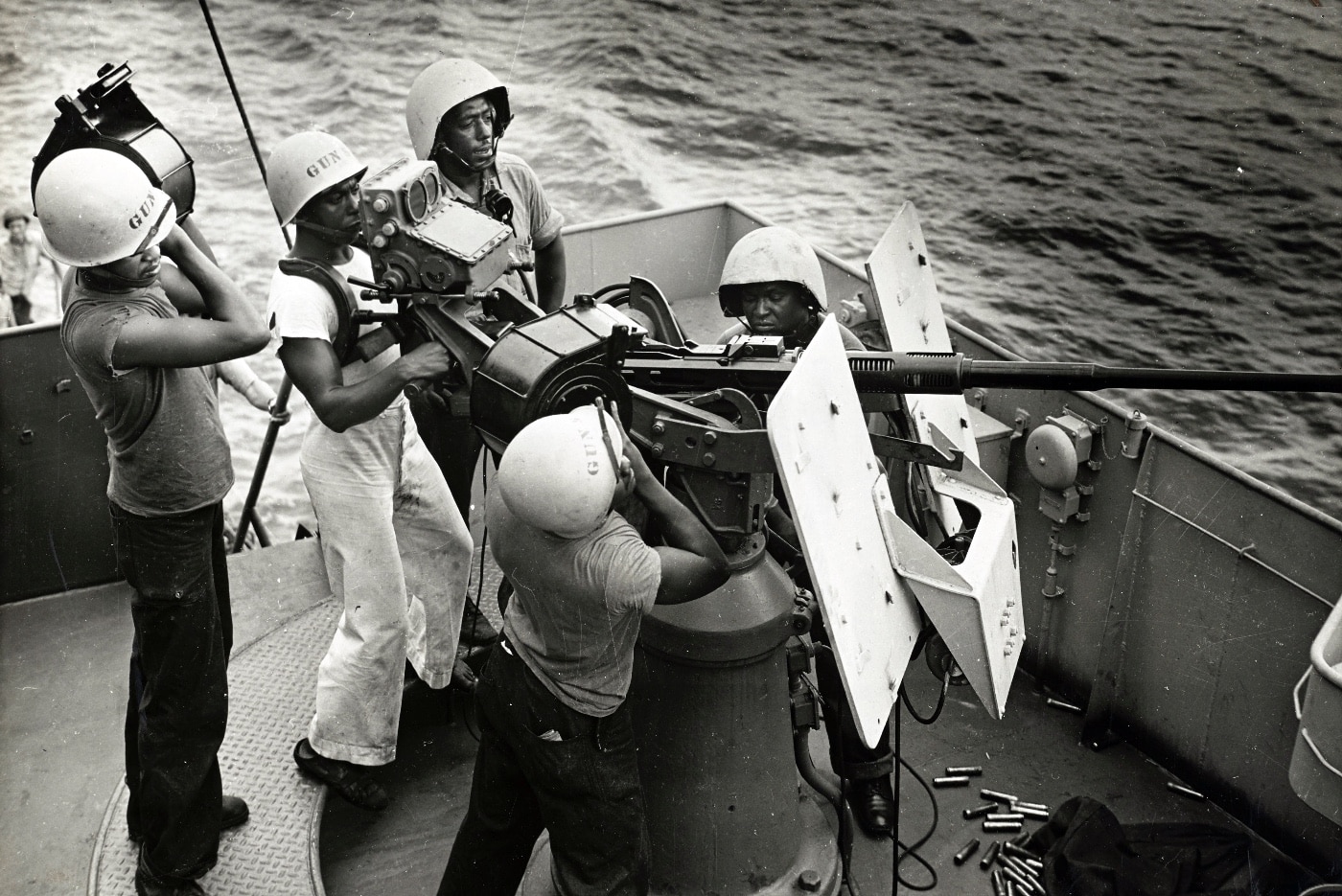
Ohka attacks on the Okinawa fleet continued until late June — with a total of 56 of the rocket bombs destroyed while making attacks or shot down aboard their Betty motherships. The radar picket destroyers took the bulk of the damage as the USS Shea (DD-750) and USS Gayety (AM-239) were damaged, and the destroyer USS Hugh W. Hadley (DD-774)was deemed damaged beyond repair. Even so, just seven U.S. ships were damaged or sunk by the Ohka rocket-bombs, and no U.S. capital ship was sunk by an Ohka.
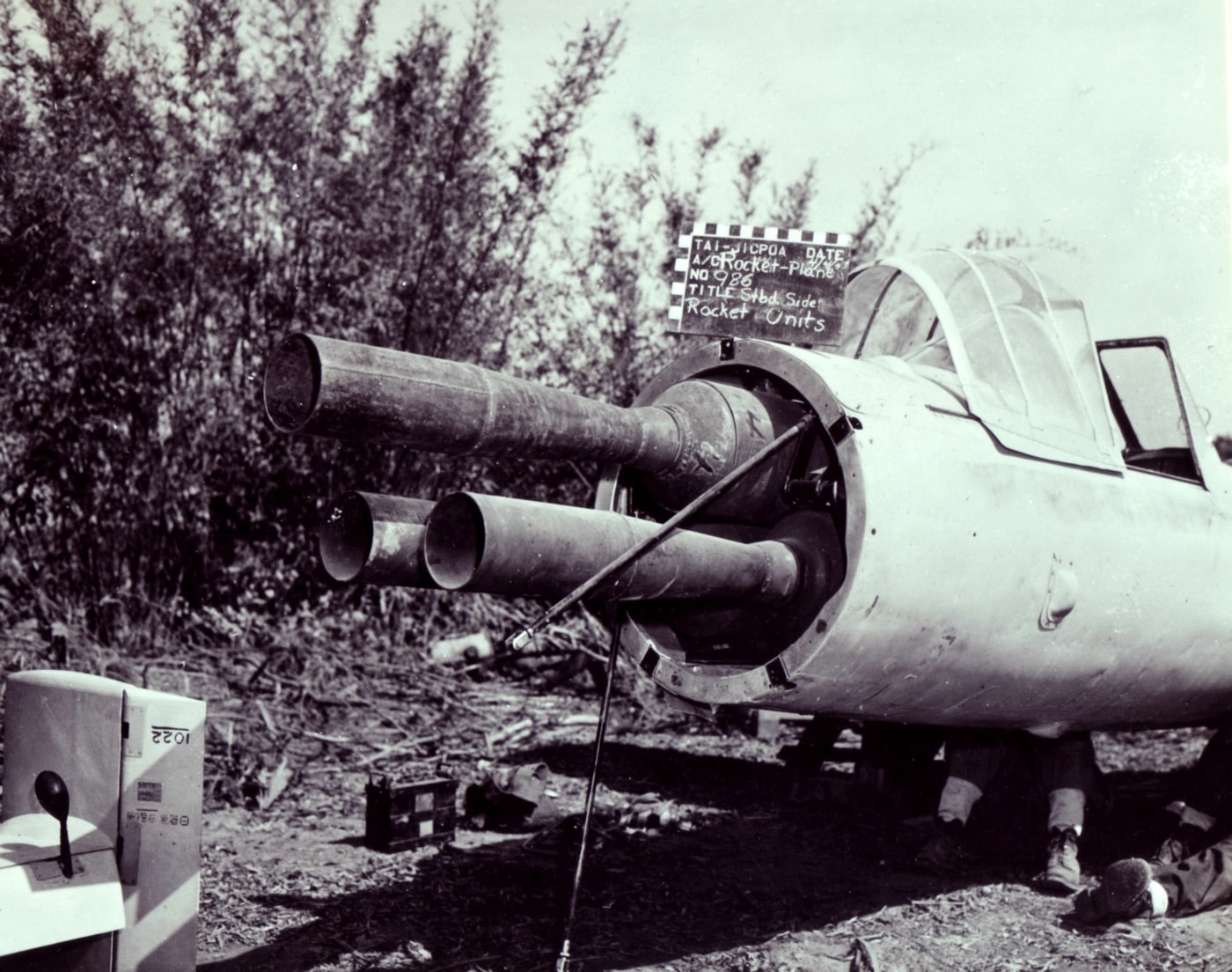
What was it like to experience an attack by the Ohka? The following text includes the official log of the Ohka attack on the USS Shea:
Attack on the destroyer USS Shea (DD-750) May 4, 1945
Off Okinawa, on radar picket duty
The successful attack on the Shea came May 4, 1945, while the ship was on picket duty (relaying enemy aerial movements to the main body of the fleet) about 75 miles from Okinawa. The Baka, which are 20-feet long, have a wingspan of 16 feet and reportedly travel at 630 miles an hour — came in so quickly that Shea gunners did not have a chance to intercept it. Only five seconds after the rocket was sighted coming out of the mist the crash occurred.
The Shea had a previous warning of a probable attack and was at battle stations with full steaming power at the time of the attack.
The Japanese used clever tactics in opening a way for the Baka’s run. Enemy planes circled overhead drawing the ship’s fire. With a mist cover, the Baka streaked in before the Shea could change targets.
The ensuing explosion and scattering of deadly metal pockmarked the superstructure. Parts of the wing and tail of the Baka, which had sheared off as the jet-propelled bomb tunneled through the ship, were recovered topside. Considerable damage resulted solely from the impact and velocity of the bomb which gored a hole four feet by five feet where it entered. Equipment was smashed and carried away, cables were severed and decks ripped open in its path.
The port list which resulted from flooding was quickly brought under control. Prompt action on the part of damage control parties did much toward preventing further damage and danger to the ship.
The Baka barely missed two men in the sound hut adjoining the chart room, deflected off a fire director shaft, went through a passageway on the port side of the chart room, and smashed through a door into the clear where parts of it exploded just over the side of the ship.0859: Bomb struck starboard side bridge structure, 3-5 seconds after first sighting, at Frame 72, passed through the ship, exploded close aboard port side at waterline. One officer, 26 men killed by concussion, shrapnel, flash or shock; 11 officers, 80 men injured. 5”/38 mounts #1 and #2 inoperative. Mount #3 operative in local control, two twin 40mm operable in local control, 2 quad 40mm operable in automatic, six 20mm guns operative. All radars inoperative. Engineering plant ready for full power. Commenced fighting fires and caring for wounded.
“I must have been knocked out by the explosion,” said Lieutenant Richard Greiner, USNR, of Rocky River, Ohio, who was officer of the deck at the time. “When I picked myself up I saw smoke coming from below, shattered glass was all about and wounded men were trying to crawl to safety. There was noise, but no confusion or hysteria. Every man immediately leaped to the job assigned him.”
Major Edwin S. Roberts, USMC, of Los Angeles, California, a Marine squadron pilot from a carrier who was flying patrol over Shea, described the incident as a minor miracle: “I was too high to catch him, so all I could do was watch — and it looked like a certain hit. Into the side of the ship he went and I waited for the explosion, but none came. A second later he emerged from the other side of the ship minus his wings. The ship continued on course, a hole straight through her! It was a miracle, but it happened.”
One man, John V. Brown, ship’s cook second class, USNR, of Bridgeport, Connecticut, died as a result of his persistency in asking for “a shot at a Jap”. Brown normally had a below-decks battle station. Because of his repeated requests he was put on a .50 caliber machine gun. He manned the gun until the second the Baka hit him in its run.
Crew members have named her the “Shooting Shea” since April 16, 1945, when she shot down seven planes in a 10-minute period near Okinawa. By the time she was hit by the Baka on May 4, 1945, the Shea had nine Japanese planes to her credit.
Official Log of the USS Shea (DD-750)
Note: the USS Shea (commissioned on September 30, 1944) was named for Commander John J. Shea of Arlington, Connecticut. Commander Shea lost his life aboard the carrier USS Wasp (CV-7) in September 1942. A letter from Commander Shea to his young son attracted national attention as he wrote: “Fighting for the defense of our country, ideals, homes, and honor is an honor and duty which your daddy had to do before he can come home and settle down with you and mother…If I don’t get back, remember, don’t ever be a quitter.”
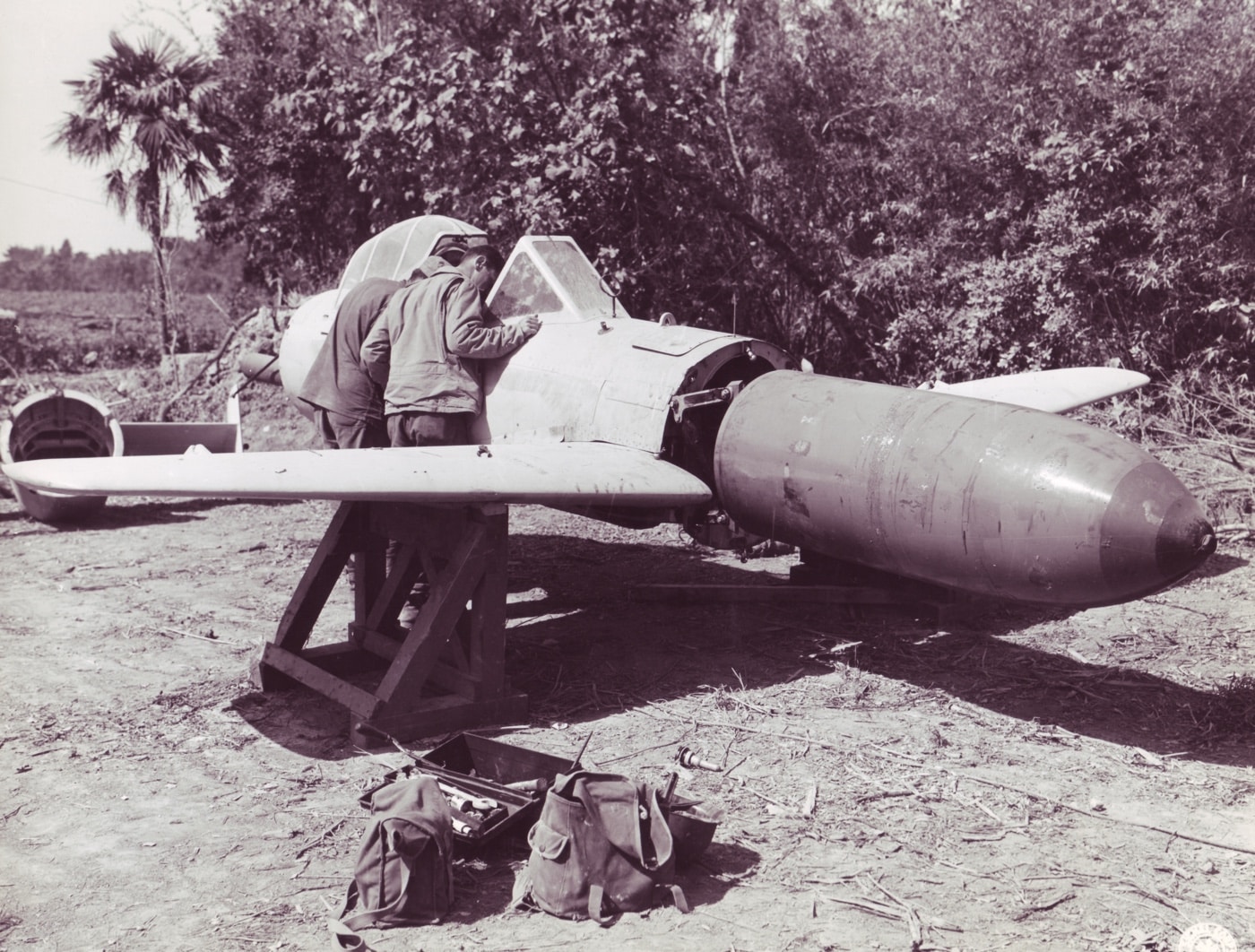
The men of the Shea didn’t quit, and after they off-loaded their wounded to the USS Crescent City (AP-40,) and buried their dead at Okinawa, they continued on to anchorage at Kerama Reto. On May 15th, the Shea joined a convoy to Ulithi Atoll. From Ulithi, she went on to Pearl Harbor, and from there, she arrived in Philadelphia Navy Yard on July 2, 1945. After extensive repairs, the ship was ready for service again on October 11, 1945. The Shea remained in service until 1958 and was kept in the U.S. Navy Reserve until 1973. It certainly lasted longer than the Ohka program that tried to destroy it.
Editor’s Note: Please be sure to check out The Armory Life Forum, where you can comment about our daily articles, as well as just talk guns and gear. Click the “Go To Forum Thread” link below to jump in!
Join the Discussion
Continue Reading
Did you enjoy this article?

 425
425






